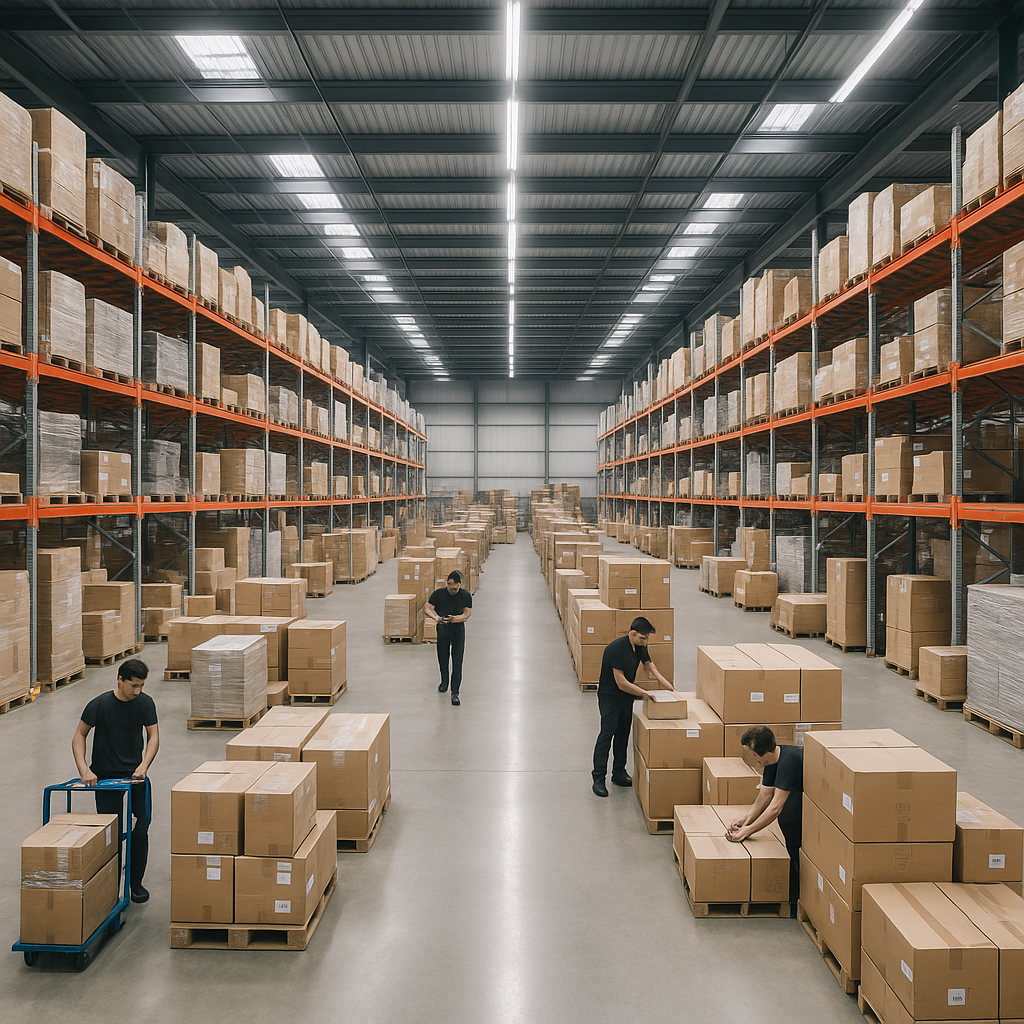

RELATED ARTICLES
TRENDING ARTICLES
ERP vs WMS: What’s the Difference for Malaysian Businesses?
Logistics and supply chain admins in Malaysia often ask the same question: Do I need a Warehouse Management System (WMS), an Enterprise Resource Planning (ERP) system, or both? The confusion is understandable — both systems manage business operations, but their focus and depth are very different. Making the wrong choice can lead to overspending, inefficiency, or gaps in your supply chain.
This guide explains ERP and WMS in simple terms, compares them side by side, and shows when Malaysian businesses should use one or both.
What is ERP (Enterprise Resource Planning)?
An ERP is a broad business management system designed to integrate multiple departments into one platform.
Scope: Company-wide business operations.
Core Functions: Finance, HR, procurement, sales, CRM, supply chain planning.
Inventory Management: Tracks stock levels but usually at a summary level. Not designed for detailed warehouse processes.
Goal: To unify data and processes across the business, giving management a single source of truth.
Best Fit in Malaysia: Large enterprises, manufacturers, and multinationals that need end-to-end visibility across departments.
What is WMS (Warehouse Management System)?
A WMS is a specialized system focused entirely on warehouse and logistics operations.
Scope: Warehouse optimization and inventory control.
Core Functions: Receiving, putaway, real-time inventory tracking, picking, packing, shipping, labor management, and reporting.
Inventory Management: Provides real-time, item-level visibility, including batch numbers, expiry dates, and storage locations.
Goal: To improve warehouse efficiency, reduce errors, and enhance customer order fulfillment.
Best Fit in Malaysia: E-commerce warehouses, 3PL providers, F&B distributors, and logistics companies managing high-volume or compliance-heavy operations.
ERP vs WMS: Key Differences
|
Feature |
ERP |
WMS |
|
Scope |
Broad (finance, HR, sales, supply chain) |
Specialized (warehouse & inventory operations) |
|
Core Functions |
Accounting, HR, CRM, procurement |
Receiving, picking, packing, shipping, reporting |
|
Inventory Handling |
Tracks stock levels broadly |
Detailed, real-time, with expiry & lot tracking |
|
Automation |
Low to moderate |
High (barcode, RFID, optimized routes) |
|
Integration |
Internal modules across departments |
Connects with ERP, couriers, e-commerce platforms |
|
Complexity |
More complex, higher training needed |
Easier to implement, warehouse-specific |
|
Cost |
High |
Medium |
When Businesses Need Both ERP and WMS
For many Malaysian businesses, the best setup is using ERP and WMS together:
- ERP manages finance, HR, and overall supply chain planning.
- WMS handles the daily warehouse execution with speed and accuracy.
Examples:
- A manufacturer uses ERP for production planning but relies on WMS for raw material control and finished goods dispatch.
- A 3PL provider integrates WMS with ERP to automate billing while keeping multi-client operations separate.
A F&B company uses ERP for procurement and finance, but WMS for expiry tracking, FEFO picking, and Halal compliance.
Choosing the Right System in Malaysia
For SMEs:
- Start with WMS or advanced inventory management software.
- ERP is often too broad and costly at early stages.
For E-Commerce Businesses:
- WMS is critical for marketplace integration (Shopee, Lazada, TikTok Shop).
- ERP may not be needed until you scale into multiple regions or channels.
For Large Enterprises:
- ERP is essential for enterprise-wide reporting.
WMS integration ensures accuracy in day-to-day warehouse execution.
FAQs
Q1: Can ERP replace WMS?
No. ERP modules cover inventory at a high level but lack the depth of a dedicated WMS.
Q2: Do SMEs in Malaysia need ERP?
Not immediately. SMEs benefit more from WMS + accounting software before moving to ERP.
Q3: Is WMS cheaper than ERP?
Yes. WMS is mid-range in cost, ERP is high investment, while simple inventory tools are cheapest.
Q4: Can ERP and WMS integrate?
Yes. Modern WMS (like GudangSys) integrate with ERP systems such as SAP, Oracle, and Microsoft Dynamics.
Q5: How do I know when to upgrade from inventory software to WMS?
When order volumes increase, manual stock tracking starts causing errors, delays, or customer complaints.
Every manual step in your warehouse hides inefficiencies you can’t afford. GudangSys uncovers these hidden costs, automates decisions, and helps you reclaim lost productivity—boosting accuracy, speed, and profitability.
Conclusion
ERP and WMS are not competitors — they’re complementary. ERP gives companies a wide business view, while WMS provides the granular warehouse control needed for accuracy and efficiency.
For Malaysian businesses:
- SMEs and e-commerce → Start with WMS.
- F&B, 3PL, manufacturing → WMS first, then ERP integration.
- Large enterprises → Use both for full operational control.
By choosing the right system at the right stage, logistics admins can ensure smoother operations, reduced costs, and better customer satisfaction.
Ready to Harness Your Warehouse Data?
Book a Free Consultation to explore how GudangSys can transform your operations.
